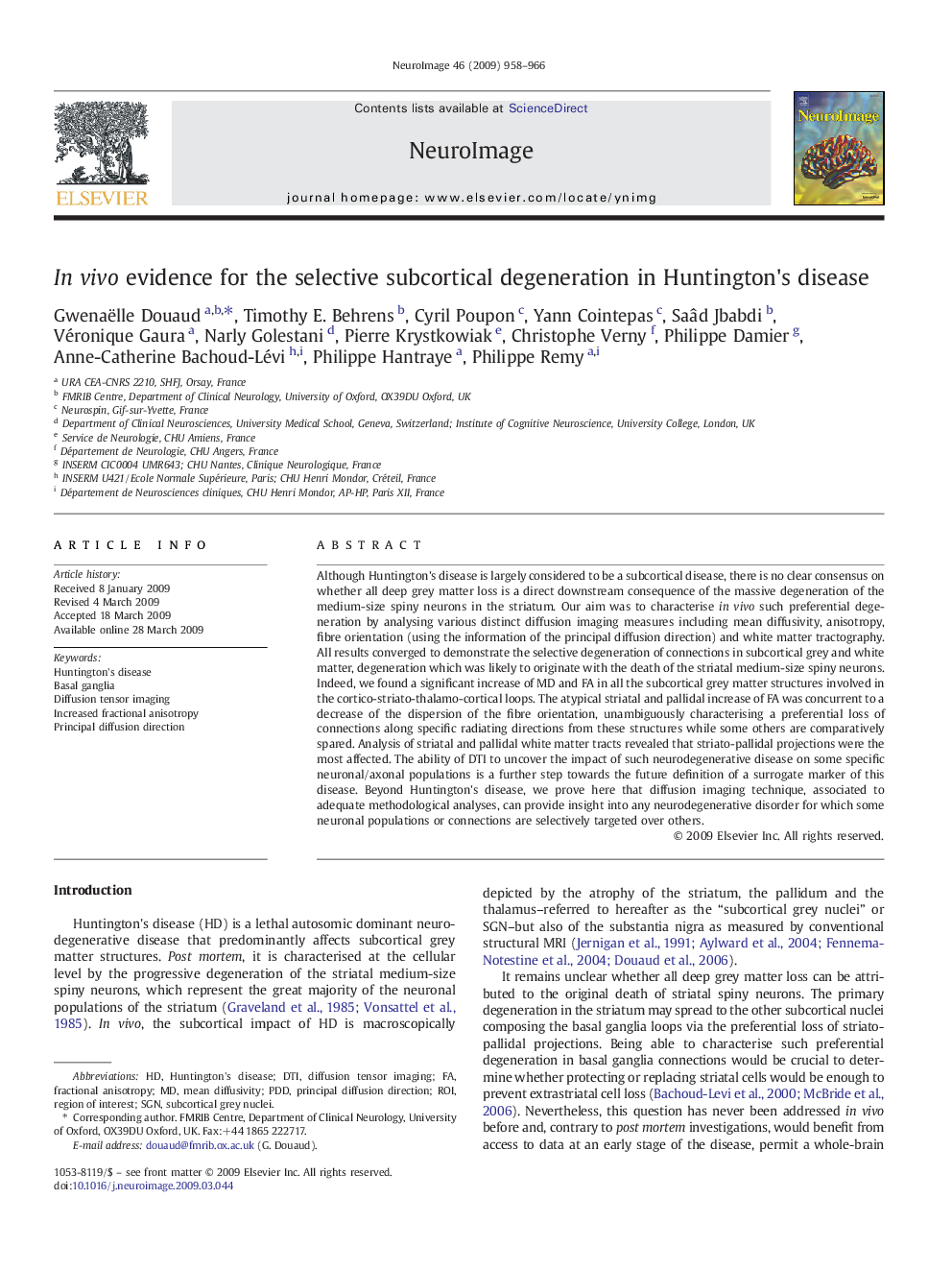| Article ID | Journal | Published Year | Pages | File Type |
|---|---|---|---|---|
| 6037210 | NeuroImage | 2009 | 9 Pages |
Abstract
Although Huntington's disease is largely considered to be a subcortical disease, there is no clear consensus on whether all deep grey matter loss is a direct downstream consequence of the massive degeneration of the medium-size spiny neurons in the striatum. Our aim was to characterise in vivo such preferential degeneration by analysing various distinct diffusion imaging measures including mean diffusivity, anisotropy, fibre orientation (using the information of the principal diffusion direction) and white matter tractography. All results converged to demonstrate the selective degeneration of connections in subcortical grey and white matter, degeneration which was likely to originate with the death of the striatal medium-size spiny neurons. Indeed, we found a significant increase of MD and FA in all the subcortical grey matter structures involved in the cortico-striato-thalamo-cortical loops. The atypical striatal and pallidal increase of FA was concurrent to a decrease of the dispersion of the fibre orientation, unambiguously characterising a preferential loss of connections along specific radiating directions from these structures while some others are comparatively spared. Analysis of striatal and pallidal white matter tracts revealed that striato-pallidal projections were the most affected. The ability of DTI to uncover the impact of such neurodegenerative disease on some specific neuronal/axonal populations is a further step towards the future definition of a surrogate marker of this disease. Beyond Huntington's disease, we prove here that diffusion imaging technique, associated to adequate methodological analyses, can provide insight into any neurodegenerative disorder for which some neuronal populations or connections are selectively targeted over others.
Keywords
Related Topics
Life Sciences
Neuroscience
Cognitive Neuroscience
Authors
Gwenaëlle Douaud, Timothy E. Behrens, Cyril Poupon, Yann Cointepas, Saâd Jbabdi, Véronique Gaura, Narly Golestani, Pierre Krystkowiak, Christophe Verny, Philippe Damier, Anne-Catherine Bachoud-Lévi, Philippe Hantraye, Philippe Remy,
